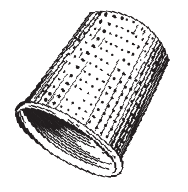Dear Thimble Readers,
I enjoy finding out what makers’ hobbies are—besides creating art and being sad, of course. Those are givens. What is surprising to me was the amount of poets who play videogames. I am not one of them; my hand-eye coordination is laughable at best. But when I thought about it more, I realized, Of course, no, this makes perfect sense. Poetry and videogames are both interactive stories. They require participation. What good is a poem if the reader won’t play along?
In any case, I found myself playing Night in the Woods. Anything with talking animals and existential dread has won me over completely. There’s a possum! He wears little overalls and lives by the tracks! He’s down on his luck, but he’ll be alright! There’s people animals and animal animals, and I don’t understand it either, but I’m okay with that.
Without getting into the lore too much, I was struck by how poignant this game is, how effective it can be to play Mae (an anthropomorphic cat who returned to her hometown after dropping out of college) in a flat world. She mostly lopes about town and talks to her friends. Why does this work? This shouldn’t work.
In one of the side-quests, Angus (an anthropomorphic bear with asthma and huge heart) tells Mae about stars:
We’re good at drawing lines through the spaces between stars like we’re pattern-finders, and we’ll find patterns, and we like really put our hearts and minds into it, and even if we don’t mean to. So I believe in a universe that doesn’t care and people who do.
Not bad for a video game. And it’s oddly meta; the game explains what it is. Find the patterns in the uncaring universe. Find what resonates in the nightmares.
We, too, are given something in which we can find patterns: a small collection of poetry, art, and prose. We have work about death, work about God, work about dogs, all three. But I’ll let you draw the lines yourself.
Why does this work? This shouldn’t work.
I’m glad this is the story you’re participating in.
Best,
Nadia Arioli

